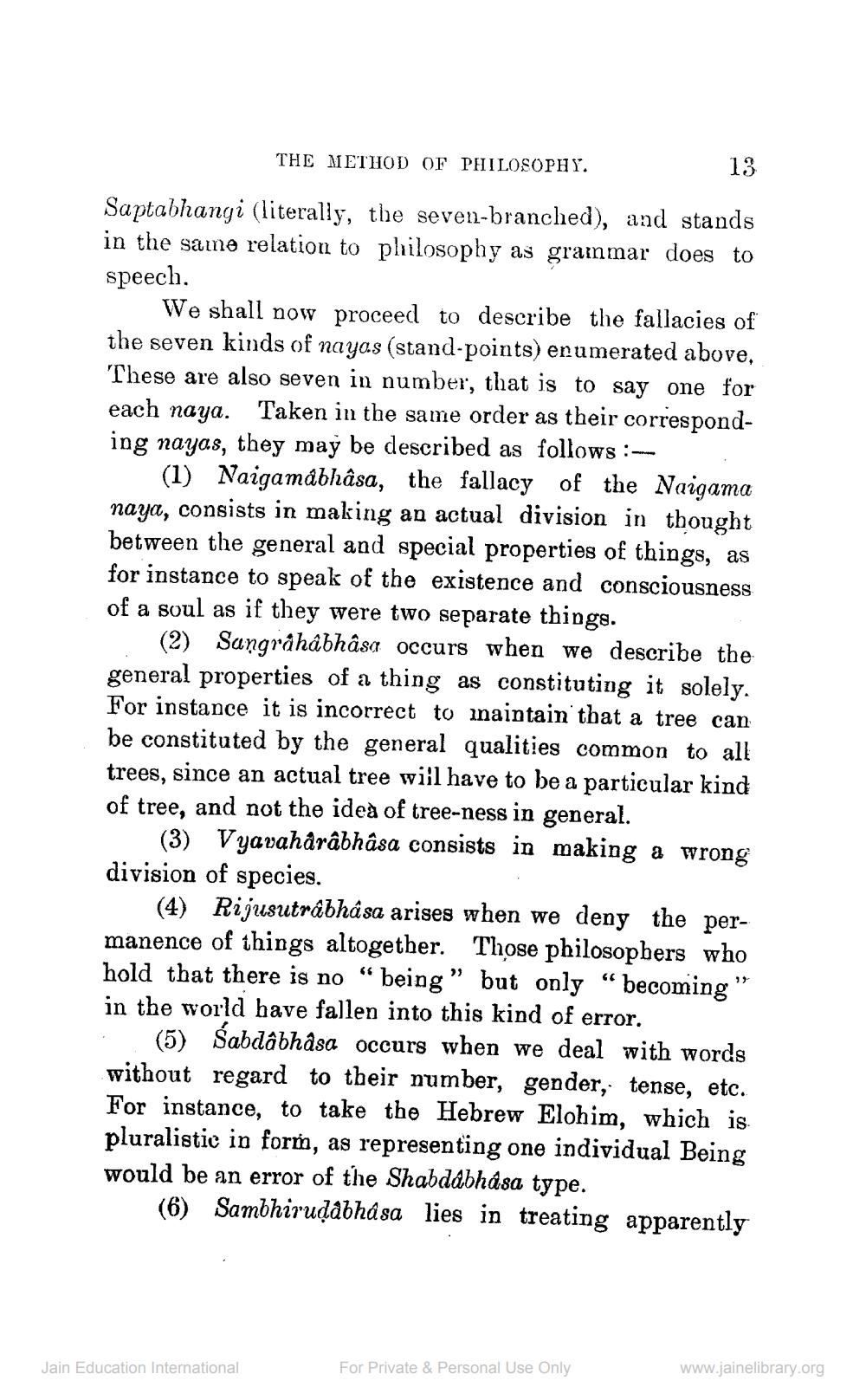________________
THE METHOD OF PHILOSOPHY.
13
Saptabhangi (literally, the seven-branched), and stands in the same relation to philosophy as grammar does to speech.
We shall now proceed to describe the fallacies of the seven kinds of nayas (stand-points) enumerated above, These are also seven in number, that is to say one for each naya. Taken in the same order as their corresponding nayas, they may be described as follows:
(1) Naigamdbhâsa, the fallacy of the Naigama naya, consists in making an actual division in thought between the general and special properties of things, as for instance to speak of the existence and consciousness of a soul as if they were two separate things.
(2) Sangrâhâbhâsa occurs when we describe the general properties of a thing as constituting it solely. For instance it is incorrect to inaintain that a tree can be constituted by the general qualities common to all trees, since an actual tree will have to be a particular kind of tree, and not the idea of tree-ness in general.
(3) Vyavahârâbhâsa consists in making a wrong division of species.
(4) Rijusutrâbhâsa arises when we deny the permanence of things altogether. Those philosopbers who hold that there is no "being” but only “becoming" in the world have fallen into this kind of error.
(5) Sabdâbhâsa occurs when we deal with words without regard to their number, gender, tense, etc. For instance, to take the Hebrew Elohim, which is pluralistic in forn, as representing one individual Being would be an error of the Shabdábhása type.
(6) Sambhirudabhá sa lies in treating apparently
For Private & Personal Use Only
www.jainelibrary.org
Jain Education International




